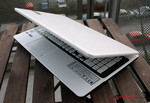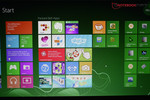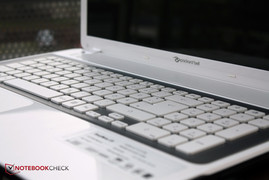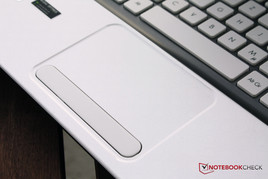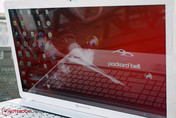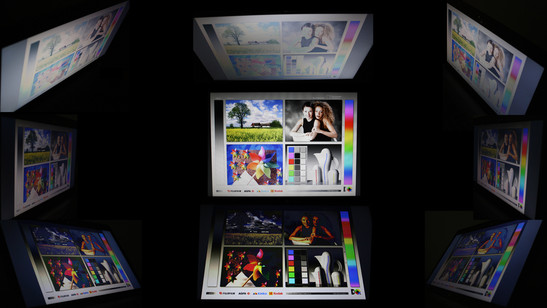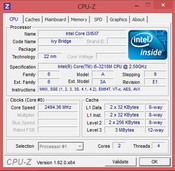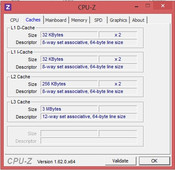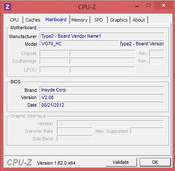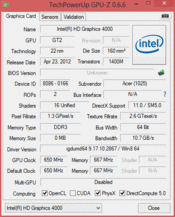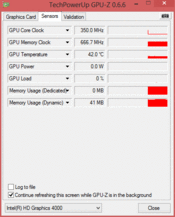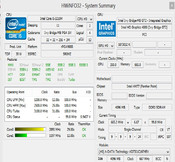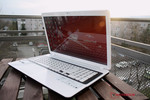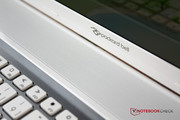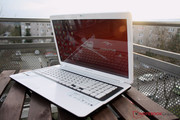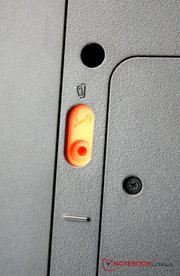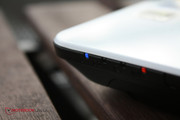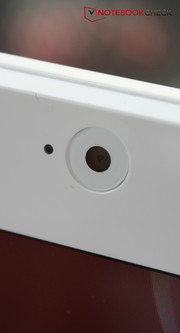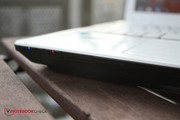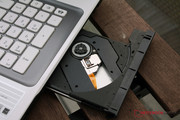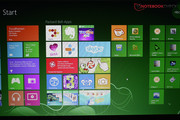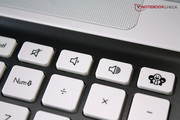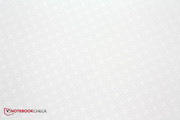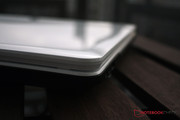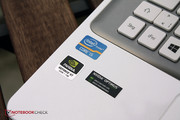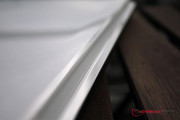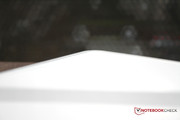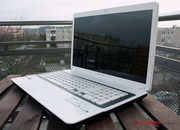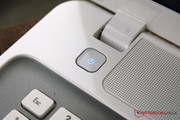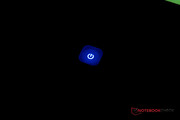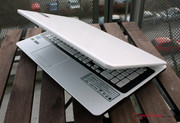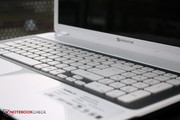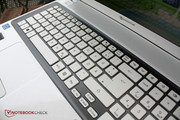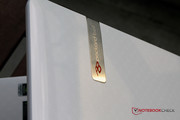Review Packard Bell EasyNote LV44HC Notebook

For the original German review, see here.
Since 2008, Packard Bell has been part of the industry giant Acer. The company is better known for affordable laptops with a good price to performance ratio than for being on the forefront of innovation. Packard Bell's lineup often features fairly unusual and also more flashy designs.
This is also true for the LV models - 17.3-inch notebooks with different processors, graphic cards, and operating systems. The most powerful version (our review model) comes with a Core i5-3210M and a GeForce GT 630M. Some versions come without a dedicated graphics card and utilize the Intel GMA HD 3000 instead. Other available processors for the Packard Bell Easynote LV series are the Core i3-2328M and the Pentium B970. There are also black and white models in this series.
With a street price of around 600 Euro (~$800), the Packard Bell Easynote LV44HC-137GE doesn't have a lot of competition: only the Dell Inspiron 17R is similarly equipped and features a comparable price. Models from HP (Envy dv7-7200sg) and Lenovo (IdeaPad G780 M843MGE) cost about 100 Euro (~$135) more. Dell also offers the Inspiron 17R SE, which is slightly more expensive, but comes with more powerful hardware, which should make it interesting for those needing more power.
If the laptop doesn't need to have a 17.3-inch screen, the MSI CX61 would be a possible choice. This 15.6-inch notebook features similar components and is also priced competitively. Let's see how the inexpensive notebook handles our battery of tests.
Case
The prices for the Packard Bell EasyNote LV start at 400 Euro and top out at 700 Euro (~$530 to ~$970) - not a lot of money for a 17.3-inch notebook. Our first impressions are positive: the notebook is made from glossy, white plastic; the lid and the palm rest feature a pattern which is very pleasing to the eye.
The bottom of the notebook is black, matte plastic and contrasts nicely with the white used elsewhere, but doesn't feel quite as nice to the touch. Packard Bell uses a dark grey bezel around the keyboard area, which looks quite upscale and is pleasing to the touch. The power switch and the status LEDs feature blue lighting and make for a colorful highlight.
The build quality is fair, although we encountered some limitations: localized pressure against the back of the display lid impacts the picture quality, the keyboard flexes in many areas, and the large display lid can be easily twisted.
All in all, both the design and the overall sturdiness are not bad given the price of the notebook. Although the visual design is quite nice, it might only appeal to some - but those preferring to make less of a statement can opt for the black version.
Connectivty
A 17.3-inch chassis should offer plenty of room for ports - but the port selection of the EasyNote LV44HC is not overly generous: power jack, USB 2.0, and the jacks for headphone and microphone on the right side, 2x USB 3.0, HDMI, VGA, LAN, and Kensington Lock on the left side. We should note that most of the ports are located on the left side towards the front, which might be an issue for lefthanders if all ports are in use.
The back has no ports; the front only houses the card reader, which can handle Multimedia, SD, xD, Memory Stick, and Memory Stick Pro.
Communication
The notebook features Gigabit LAN and WLAN 802.11 b/g/n. Considering the price point, we wouldn't have expected much more. The WLAN module is - according to the Windows wireless indicator - actually quite good: we still had 5 bars when operating the EasyNote 10 meters (32.8 feet) from the router and through two walls.
The 1.3 megapixel webcam offers better quality than the 0.9 megapixel cameras offered on competing models. The picture quality still leaves a bit to be desired though: the pictures are slightly overexposed and suffer from color fringing at the edges. For the most likely usage scenario (video conferencing), the quality is nonetheless acceptable.
Accessories
Aside from the notebook and its power adapter, the box of the Packard Bell EasyNote LV44HC only includes two quickstart guides.
Those interested in buying accessories won't find any at www.packardbell.de - only a bad translation suggesting to look at retail stores.
Software
Packard Bell doesn't skimp on the software, but it's a mixed bag. While there are quite a few of useful tools, there are also a lot of superfluous and unnecessary programs, tools, and games.
Aside from the commonly preinstalled trial versions of Norton Internet Security and Microsoft Office, there are some helpful tools available through the Windows 8 start screen, like Skype and TuneIn radio, which enables various Internet radio stations. There is also a weather app, a newsreader, a media player (CyberLink Media), a few games from Microsoft, and some from Wild Tangent Software, which allow the user to try out the games before purchasing.
The Packard Bell Explorer lists all the titles and gives a short description - a nice feature, since the user can decide what to keep and what not.
There is also a tool which bundles all social networks apps and another one for the desktop - the "Packard Bell Power Button" - which should appease those frustrated with the fact that shutting down Windows 8 is not that straightforward. The tool allows the user to place a power button on the desktop or into the task bar.
Packard Bell's website also states that the software bundle includes Adobe Photoshop Elements - a downgraded (but still very powerful) version of the popular photo editing software. We were unable to find Elements on our review system and couldn't find any reference on how to download it, either.
The software is not on supplied on a DVD, but preinstalled on a recovery partition on the hard drive, thereby reducing the usable capacity to 447GB.
The plethora of preinstalled software does include some gems. We like the Packard Bell Explorer, which provides an overview of the software and lets the user decide what to keep. As far as Photoshop Elements is concerned, we recommend asking before the purchase to make sure that the full version is installed.
Input Devices
Keyboard
The spiffy looking large and white chiclet-style keys feature ample distance between them and contrast nicely with the grey base of the keyboard. Even though the keyboard is not backlit, the white keys are easy to identify even when there is not a lot of light.
The typing experience does not keep up with the cool design: the click-point is not well defined, the keyboard sounds rather cheap and flexes a lot - the EasyNote LV44HC is quite inexpensive, after all.
We like that there are separate keys for volume control - but would prefer larger arrow keys on a notebook this size.
Touchpad
The large touchpad, which is not in the center but located more towards the left side of the notebook, has a slightly roughened surface and supports multi-touch gestures (like two-finger zooming or scrolling - just like on a smartphone).
The mouse buttons function well, although key travel is a bit too short for our liking. Those wanting to use an external mouse can simply deactivate the touchpad with a function key.
Display
The glossy display supports a resolution of 1600 x 900 pixels (more or less the standard for 17.3-inch laptops); the colors of the Windows 8 screen look good and are both bright and vivid.
| |||||||||||||||||||||||||
Brightness Distribution: 88 %
Center on Battery: 181 cd/m²
Contrast: 656:1 (Black: 0.36 cd/m²)54.6% AdobeRGB 1998 (Argyll 2.2.0 3D)
76.7% sRGB (Argyll 2.2.0 3D)
52.9% Display P3 (Argyll 2.2.0 3D)
We measured a maximum display brightness of 236cd/m² - OK but not great, as other notebooks have substantially brighter panels. While on battery, the brightness decreases to 181 cd/m², which makes using the notebook outside or in brightly lit rooms more difficult. Brightness distribution is very even and both the black level and contrast are quite good.
Our review model covers the reference color space sRGB to about 80 percent - similar to comparable notebooks like the MSI CX61. When we analyzed the (factory) picture in detail, we noticed large deviations in the cyan range and gray levels (DeltaE >15).
The viewing angles are sufficient and in line with what we've come to expect from affordable TN displays (the MSI CX61 uses the same type). Deviating from the vertical plane results in color shifts very quickly; to the left and right the angles remain stable until about 45 degrees.
Performance
The Packard Bell EasyNote LV44HC-137GE is labeled as a multimedia notebook and should be able to handle HD videos without any lag, some photo editing, and at least some (less demanding) games. Given the low-performance hardware, these goals should be realistic - but we will examine the details in the following section.
Processor
The dual-core Core i5-3210M is based on Intel's Ivy Bridge architecture and is manufactured using the 22 nanometer process with 3D transistors. Hyperthreading enables the CPU to handle up to four threads at the same time. The base frequency of the CPU is 2.5 GHz, but Turbo Boost can overclock to 2.9 GHz (or 3.1 GHz when only one core is in use).
Cinebench R11.5 confirms that both cores operate at 2.9 GHz under load, even while the laptop is running on battery (as long as the performance profile is selected). The result of the single-core test is somewhat surprising: the CPU remains at 2.9 GHz - the maximum Turbo Boost frequency is not available.
When we compared our review model (using the different versions of the Cinebench benchmark tests) to other notebooks with the same CPU, we noticed a performance loss of about 10 percent: the Samsung Serie 5 550P5C is about 10 percent faster throughout. The MSI CX61 (with 4 GB RAM) also is about 5-10 percent faster in the Cinebench R10 test, but about even running Cinebench R11.5.
System Performance
Based on our experience, a system with an Intel Core i5-3210M , NVIDIA GeForce GT630M, and 4GB DDR3 RAM provides enough performance to handle daily tasks. Those wanting to subject their system to more demanding duties, like HD video editing, photo editing, and heavy duty calculations, will push the hardware to its limits rather quickly though.
Of course it's not our opinion that matters, but the test results. We use PC Mark 7, since this benchmark also works for Windows 8 (PC Mark Vantage does not). The Packard Bell LV44HC-134GE ended up with 2375 points in this test - comparable to similarly equipped notebooks. The HP Envy m6-1101sg is slightly faster (8 GB of RAM), while the Lenovo IdeaPad G780 has a throttled processor and falls behind.
| PCMark 7 Score | 2375 points | |
Help | ||
Storage Devices
The 500 GB hard drive is sourced from Western Digital and doesn't offer any surprises: the performance is typical for the class, although the transfer rates could be a tad higher, even for a 5400 RPM drive. Other (faster) disk drives with the same rotational speed achieve 80 MB/s and more.
GPU Performance
The GeForce GT630M, which is based on the older Fermi architecture, is an affordable lower middle-class graphics card. It offers enough performance for entertainment purposes and the occasional game (as long as the game is not very resource intensive). The GPU frequency can increase to 800 MHz during load. During our stress test using the Unigine Heaven benchmark test, the card was able to sustain this frequency. The clock speed does not drop when the notebook is running on battery - even when we added another calculation while running the Cinebench R11.5 Open GL test and had the GPU utilization reached almost 100 percent.
The performance of our test system was slightly higher than similarly equipped notebooks during the 3DMark06 and the 3DMark11 test. For less complex multimedia tasks - like the playback of HD movies or simple effect calculations - the card supplies enough power. We'll take a look at how the GPU handles gaming in the section that follows.
| 3DMark 03 Standard | 22478 points | |
| 3DMark 06 Standard Score | 9832 points | |
Help | ||
Gaming Performance
Current games, like Assassin’s Creed 3, are playable - as long as the graphic settings are set to minimum and the resolution is low. Even then, the frame rate maxes out at 30 frames and stuttering can occur. Less demanding titles, like Fifa13 or Diablo 3 can be played at medium to high settings without issues.
The synthetic benchmarks show that the Packard Bell LV44HC-134GE performs like its (similarly equipped) competition, for example the MSI CX61 or the Lenovo IdeaPad G780 (we used the same display resolution to be able to compare them despite the different size).
Our review model is in no way future-proof as far as gaming is concerned. Our recommendation for users wanting to make sure their rig is great now and in the future would be the One that offers the M73-2N - a 17-inch gaming notebook at a very competitive price. For the occasional game that doesn't require too much power (browser game, graphic adventure), the Packard Bell EasyNote LV44HC-134GE is sufficient.
| low | med. | high | ultra | |
| Anno 2070 (2011) | 105 | 36 | 23 | |
| Diablo III (2012) | 90 | 65 | 42 | |
| Fifa 13 (2012) | 245 | 147 | 115 | |
| Assassin´s Creed III (2012) | 34 | 30 |
Emissions
Simply exemplary. When the system is not under load, the fan frequently turns off and the noise level is whisper-quiet at 30.6 dB. The hard drive is also barely audible at 31.9 dB. DVD playback is a little bit louder - we measured 34.3 dB, which is still very acceptable.
Even when the notebook is under load, the noise level tops out at 36.6 dB, which won't bother most users. We are quite happy with the result and would recommend the Packard Bell LV44HC-134GE to those who are noise sensitive.
Noise Level
| Idle |
| 30.6 / 30.6 / 31.5 dB(A) |
| HDD |
| 31.9 dB(A) |
| DVD |
| 34.3 / dB(A) |
| Load |
| 34.3 / 36.6 dB(A) |
 | ||
30 dB silent 40 dB(A) audible 50 dB(A) loud |
||
min: | ||
Temperature
As far as temperatures are concerned, the notebook is pretty much in line with its competition. That Packard Bell didn't spend too much time designing the cooling system is evident when we compare it to the Samsung Series 7 700Z3C: even though this 14-inch notebook features the same hardware, the cooling system is as efficient as the one of the 17.3-inch review model.
Despite the fact that temperatures could be lower, we only measured about 30.5 degrees Celsius (86.9 degrees Fahrenheit) during idle and the palm rest remains pretty cool even under load. On the top left side, we measured temperatures up to 53.1 degrees Celsius (86.9 degrees Fahrenheit) under load - maybe a little much when the notebook is used on the lap. Overall, we are happy with the temperature distribution, since most of the chassis remains fairly cool even when the performance envelope is pushed a bit.
(±) The maximum temperature on the upper side is 42 °C / 108 F, compared to the average of 36.9 °C / 98 F, ranging from 21.1 to 71 °C for the class Multimedia.
(-) The bottom heats up to a maximum of 53.1 °C / 128 F, compared to the average of 39.1 °C / 102 F
(+) In idle usage, the average temperature for the upper side is 30 °C / 86 F, compared to the device average of 31.2 °C / 88 F.
(±) The palmrests and touchpad can get very hot to the touch with a maximum of 36.6 °C / 97.9 F.
(-) The average temperature of the palmrest area of similar devices was 28.8 °C / 83.8 F (-7.8 °C / -14.1 F).
Speakers
We already mentioned it briefly: the speakers are very good indeed. Full sound with ample volume makes watching movies. playing games, or listening to music a joy.
Of course there are notebooks from Asus and Dell, which feature even better speakers. Our review model emphasizes highs a little too much and a subwoofer would be a welcome addition. Still, all things considered, the speakers are more than acceptable for the price segment.
Power Consumption
The Packard Bell EasyNote LV44HC is not very energy efficient: the idle consumption of 14.2 watts is still acceptable, but the 81.8 watts we measured under maximum load was quite high. Other notebooks are better optimized: the (similarly equipped) Lenovo IdeaPad G780 uses about 15 watts less.
The power adapter is rated for 90 watts and should offer enough capacity. When the notebook is plugged in but not charging, it still consumes 0.2 - 0.4 watts.
| Off / Standby | |
| Idle | |
| Load |
|
Battery Life
The battery has a rated capacity of 48 Wh - enough for a run time of 1 hour 41 minutes when the LV44HC-134GE is under maximum load. When the notebook is idle, the battery life tops out at around 4 hours, which matches the manufacturer's claim.
WLAN surfing is possible for almost 3 hours. When playing back a DVD movie, the notebook lasted for about 2 hours and 30 minutes. Overall, the battery life is comparable to other notebooks - although the Inspiron 17R-SE-7720 - which comes with more powerful hardware but the same battery - lasts almost the same time as our review model.
Verdict
With the EasyNote LV44HC-137GE, Packard Bell designed a decent enough system - no more, no less. We appreciate the cool looks, the powerful speakers (with separate volume keys), and some of the more useful software. The notebook is also very quiet since the fan doesn't spin all the time, and temperatures are controlled well enough.
Given the street price of 599 Euro (~$800), minor flaws in the build quality seem acceptable. We think that Packard Bell could have equipped the notebook with more ports; we also don't like their placement, as the cables get in the way as soon as peripherals are connected. The keys of the keyboard don't offer a lot of feedback and the keyboard flexes when pressure is applied. The display is only average and won't wow the user.
In summary: strengths and weaknesses balance each other out - depending on the usage scenario, one or the other wins out. The price to performance ratio is - considering the hardware components and processing power - very good. We can recommend this notebook to those looking for a decent, well built, and quiet notebook for watching movies and playing the occasional game. Competing notebooks from Lenovo (IdeaPad G780 M843MGE) or HP (Envy dv7-7200sg) cost about 100 Euro (~$135) more (the latter is equipped with an aluminum chassis, however). If a 15.6-inch display is large enough, models from MSI, Asus (K53SV-SX982V), and this HP are worth a look.


 Deutsch
Deutsch English
English Español
Español Français
Français Italiano
Italiano Nederlands
Nederlands Polski
Polski Português
Português Русский
Русский Türkçe
Türkçe Svenska
Svenska Chinese
Chinese Magyar
Magyar